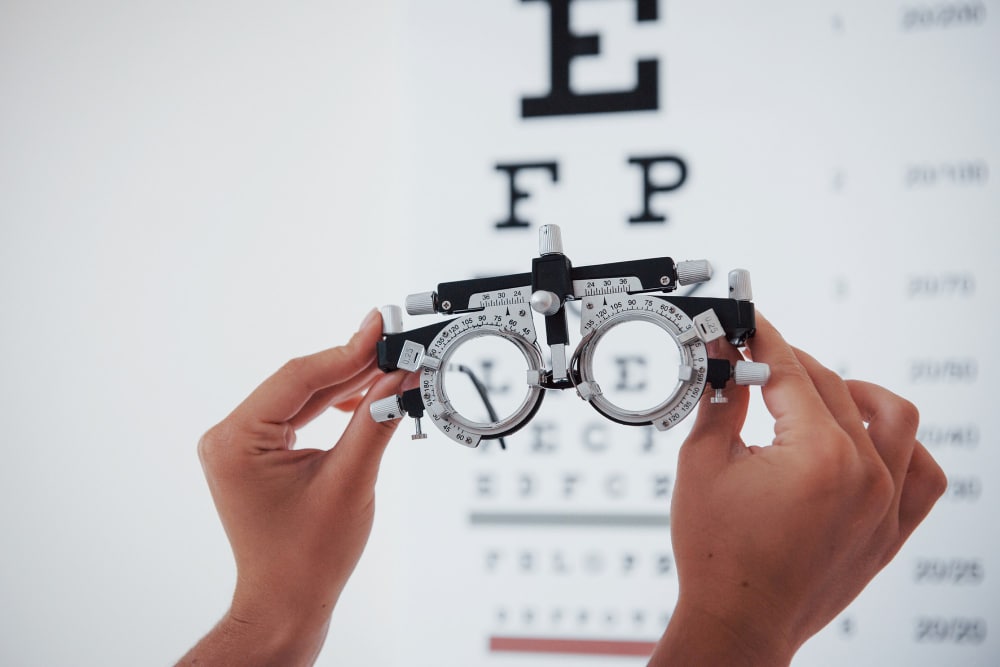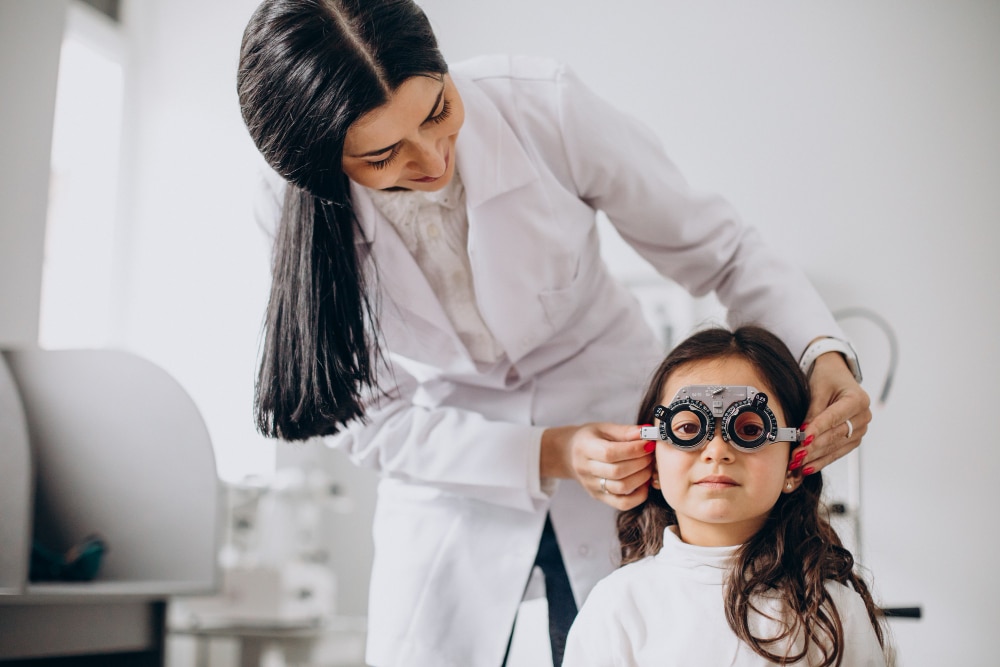What is Myopia?
Myopia is commonly known as ‘near-sightedness’ or ‘short-sightedness’ and is a common eye condition that causes blurred distance vision. Myopia is a condition in which light is focused in front of the retina, resulting in blurred vision. Short-sighted people can often see clearly at short distances but will not be able to see distant objects clearly.
The light rays focus at a point in front of the retina, instead of directly on the surface, causing blurred vision. This can be caused by the eyeball being too long and/or the cornea being too curved for the length of the eyeball.
Our goal is to assist every child to achieve the clearest vision possible and optimal visual performance.
About 65% of Australian parents (with children 0-17 years old) do not know what myopia is.
Source: Myopia in Children
Causes of Myopia
Research shows that modern lifestyles may influence the development of myopia.
- Low levels of outdoor activity
- Low levels of light exposure
- Prolonged near tasks such as reading and gaming on portable devices
Genetics also plays a strong role. The likelihood of developing myopia, particularly high myopia increases when one or both parents are myopic.
Symptoms
The following signs indicate that your child may need to have their eyes examined:
- Problems seeing the TV or blackboard
- Holding things too close to the face
- Eye rubbing or excessive blinking
- Reduced performance at school
- Complaining of sore eyes or headaches
- Tired eyes
- Squinting eyes

Risks of High Myopia
High myopia (a refractive error of at least -5.00D in either eye) is associated with a higher risk of developing:
- Retinal detachment
- Macular degeneration
- Glaucoma
- Early onset cataracts
- Myopic maculopathy.
High prescriptions also have the disadvantage of:
- Higher cost for spectacle lenses
- Lower tolerance of spectacles (e.g. headaches, lower clarity)
Research has found that managing myopia in its early stages can slow its progression, reducing the potential risk of developing high myopia and its associated conditions later in life.

Myopia Progression
Myopia usually starts in childhood and typically progress until the child stops growing. However research shows that myopia is occurring earlier in life:
- In 1983, the typical onset of myopia was around 11 years of age.
- In 2000, the average onset of myopia was 8 years of age.
- In recent years, we have seen onset occurring as early as 5-6 years old. Alarmingly, myopia tends to progress at the most aggressive rate between 5-9 years old, and can be -1D to -2D per year.
Because myopia progression typically slows around 17 years of age, this earlier onset results in a higher end point.
For example
If myopia progresses at -1.00D per year from 5-9 years old, and -0.5D per year from 9-17 years old…
*This scenario is hypothetical. Actual progression rates will differ person to person.

Boy 1
Myopia starts at age 11, and progresses until age 17.
Prescription will be -3.00D by 17yrs old

Boy 2
Myopia started at age 8, and progresses until age 17.
Prescription will be -5.00D by 17yrs old

Boy 3
Myopia started at age 5, and progresses until age 17.
Prescription will be -8.00D by 17yrs old
Frequently Asked Questions
Is it necessary to control myopia? It’s so much cheaper to get normal glasses
If the myopia starts at age 20, then that might be true. However if the onset of myopia is from a young age (e.g. 5 to 12 years old), not controlling the increase can end up costing more financially and health-wise.
This could be in the form of:
- Higher cost for spectacle lenses
- Lower tolerance of glasses (e.g. headaches, lower clarity)
- Treatment for retinal tear, detachment, maculopathy, glaucoma, cataract is much more expensive.
My child won't stop using screens. What can I do?
Myopia control is ideally both parent and the child’s responsibilities.
It’s understandable that parents can be tired during the weekend after a long week at work, and just want to rest. However this means possibly leaving children to use more time on the TV, phone, tablet, or computer to entertain themselves.
Unfortunately this does mean that parents need to take on an active role in providing alternative activities for your child. It’s also a great idea to limit your own screen usage in front of your child, to be a great role model!
How do I achieve the optimal amount of outdoor time for my child?
It is recommended to spend 15 hours a week outdoors.
- To put things into perspective, a typical school day only provides two breaks (30 mins morning tea, 30 mins lunch). This means 5 / 15 hours is already taken care of.
- Playing an outdoor sport twice a week can contribute another 3 hours = 8 / 15 done.
- Back/front yard play after school, 30 mins a day = 10.5 / 15 done.
- Walking the dog 3 times a week, 30 mins a day = 12 / 15 done.
- Weekend 2-4hrs of >6m outdoor environment (bushwalking, beach, lake, park) = 15 hours done!
How long do I have to be careful of myopia?
The most crucial time for controlling myopia is between ages 5-12. This is typically where the fastest progression occurs, although myopia progression can continue into adulthood.
Generally speaking, your prescription is at the most risk of increasing during periods of your life where you are studying. E.g. School, University, Masters, PhD.
Grace & Vision Optometrist has a special interest in controlling the progression of childhood myopia through a variety of methods.
What Can You Do?
Talk to us about finding a myopia control solution by booking an appointment to with one of our optometrist .